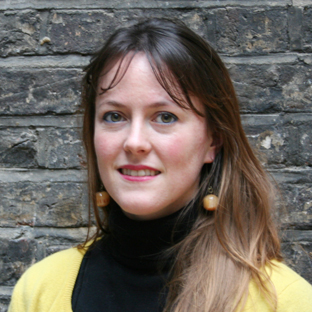In its quest for a more ‘circular economy’, the RSA Great Recovery is focusing on the links between design, materials and waste. Last week, I visited the Science Museum’s new installation on rubbish.
The bowels of the Science Museum are perhaps an appropriate space for an exhibition about waste. You can smell it even before you reach the entrance to the Rubbish Collection. The odour has been somewhat deodorised for public consumption, but the unmistakeable whiff of putrefying food, stale coffee and plasticisers reaches into the stairwell above.
Needless to say it is this ‘pong’ that seems to prevent some visitors from venturing down into the strip-lit atrium, where volunteers in boiler suits and gloves are tipping bags of rubbish onto a row of white tables.
The Rubbish Collection is a project by artist Joshua Sofaer which hopes to change people’s attitudes towards waste by bringing them into close proximity with it. Once an object is brought into a museum, says Sofaer, it is usually imbued with a certain value and afforded a kind of reverence. Not so once it turns to waste, and he is on a mission to involve the public in documenting and examining the museum’s discards over a period of 30 days.
My chosen volunteer places a mystery bag of rubbish onto her clinician’s table. I have signed a disclaimer form and am wearing two sets of gloves and a plastic apron. As I pick each piece of detritus from the sack, I become a detective building a story in the life of the museum. It is obvious from the mixed contents that the bag has come from an office rather than, say, the café or the cleaning store. Three cardboard Graze boxes (hmm, a healthy scientist?), some ‘Anew’ face cream packaging (not too busy at work to notice a bit of dry skin, probably a woman), a Mikado milk chocolate sticks packet (likes a treat sometimes – well don’t we all?), and some generic coffee cups, sandwich boxes and drinks bottles. There are also rather a lot of papers relating to an impending neuro-ethics symposium and a Brain Alliance trip to Milan, from which I deduce that this lady is a neuroscientist, that her flight home cost more than her flight out (£195 as opposed to £162), and that her bank details are – but no, it might be unfair to give those away, even though they are there in plain view on a badly torn-up piece of paper. Moreover, though her employer may provide her with 100% recycled paper (the final packet in the bag), it is evident from the amount of recyclable material in this not-destined-for-recycling rubbish collection that the lady is none too concerned about her environmental credentials!
Once the rubbish has been photographed and documented, it goes off to the various waste handlers for sorting and bundling before the materials are ‘invited back’ (Sofaer again) in the shape of nicely packaged cubes or pellets for a display. Thames Water is also getting involved in returning ‘sludge cake’ from its sewers for the exhibition! Over the course of the month, it is anticipated that 8.5 tonnes of paper and card as well as half a tonne of steel will pass through the system. Two days in to the sorting process and the team has already rescued £5.28 (a five pound note and lots of stray coppers) from the museum bin bags!
The idea is that providing an opportunity for citizen science and getting the great unwashed involved in documenting their own detritus will afford an opportunity for behaviour change through a kind of ‘presencing’ exercise. Faced with their own wastefulness, people may be nudged to think again about the real value of the things we throw away, and how they can give a second life to the next unwanted item headed for the trash can. Of course the reality is more complex than this, and the well-documented ‘value-action gap’ describes the discrepancy between people’s intentions and their actions.
For the secret detective, the practised voyeur or simply the interested Joe, the Rubbish Collection at the Science Museum is well worth a visit. And from mid-July, Phase 2 will highlight the transformation of our waste as it continues its onward journey. Although matter cannot be created nor destroyed, yet we are all waste-makers alike.
Lucy Chamberlin is Project Manager and Researcher - The Great Recovery

Be the first to write a comment
Comments
Please login to post a comment or reply
Don't have an account? Click here to register.